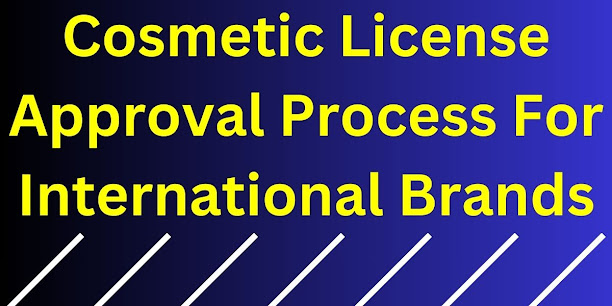Cosmetic License Approval Process For International Brands
The desire for high-end international cosmetic products is driving the growth of India's beauty and personal care industry. India is a desirable market for international cosmetic companies because consumers are more concerned than ever about product quality, safety, and current trends. But before these products can be sold on Indian shelves or through e-commerce platforms, they must comply with local regulatory standards, starting with cosmetic registration and obtaining a valid cosmetic license.
For international brands, understanding and navigating the approval process can be complex without local expertise. This blog will guide you through the step-by-step cosmetic license approval process, explain key regulatory requirements, and highlight common challenges along the way.
Understanding India’s Cosmetic Regulatory Landscape
The Drugs and Cosmetics Act of 1940 and the Cosmetics Rules of 2020, which are overseen by the Central Drugs Standard Control Organization (CDSCO), govern cosmetic items in India. These regulations are applicable to foreign companies wishing to sell their goods in India as well as to native producers.
Any cosmetic product made outside of India is required by Indian regulations to register with CDSCO for cosmetic purposes before it can be imported, marketed, or distributed within the nation. Without this registration, goods cannot lawfully enter the Indian market and customs clearance is refused.
Step-by-Step Process for Cosmetic License Approval
1. Appoint an Authorized Indian Agent
Direct applications for cosmetic registration are not accepted from foreign manufacturers. They must instead designate an Authorized Indian Agent (AIA), a business or person with headquarters in India who is in charge of managing the registration procedure, acting as the brand's representative before CDSCO, and assuring regulatory compliance.
2. Compile and Submit Required Documentation
Applying for a cosmetic license requires a long set of documentation. These include:
- Duly filled Form 42 (application form for registration certificate)
- Power of Attorney in favor of the Indian agent
- Product details including ingredients, formulation, and specifications
- Free Sale Certificate (FSC)
- Labels, product artwork, and intended claims
- Safety test reports and certificates of analysis
3. Application Submission and Fee Payment
When the paperwork is prepared, the application is sent to CDSCO through SUGAM, their web platform. Every product that is registered must pay a government charge. The CDSCO checks the application for conformity and completeness when it is submitted.
4. Inspection, Review, and Clarifications
CDSCO may ask for revisions, more documentation, or clarifications during the review process. Inspections of the importer's facility or warehouse may occasionally be carried out to confirm compliance. The volume of applications and the product's complexity may have an impact on the review timeline.
5. Grant of Cosmetic Registration Certificate
Upon successful review, CDSCO issues the cosmetic registration certificate in Form 43, valid for three years. This certificate authorizes the import, distribution, and sale of the cosmetic product in India.
Also Read This - The Impact Of Cosmetic Registration On Brand Authenticity
Common Challenges Faced by International Brands
1. Regulatory Variations and Complexity
India’s cosmetic regulations differ significantly from those in the US, EU, or other regions. Understanding local compliance requirements, including ingredient restrictions and packaging norms, can be a challenge.
2. Labeling and Marketing Restrictions
Indian rules require cosmetic labels to include mandatory English-language disclosures, ingredient lists, batch numbers, MRP, expiration date, and country of origin. Claims have to be truthful and not deceptive.
3. Delays in Documentation and Follow-ups
Incomplete documents, improper formatting, or delays in response to CDSCO queries can prolong the registration timeline.
4. Changing Regulatory Guidelines
The regulatory landscape in India is always changing, so it's imperative to stay current on the most recent rules to prevent fines or denials.
Conclusion
Securing a cosmetic license and completing the cosmetic registration process is essential for international cosmetic brands seeking success in the Indian market. While the process involves multiple steps, regulatory requirements, and formal documentation, it is manageable with the right support.
The entire process, from document creation to final cosmetic certificate approval, may be made simpler by collaborating with a reliable compliance with the assistance of Legalraasta. Legalraasta consultants make a seamless, transparent, and trouble-free journey for international cosmetic brands entering India because to its years of experience managing CDSCO registrations.



Comments
Post a Comment